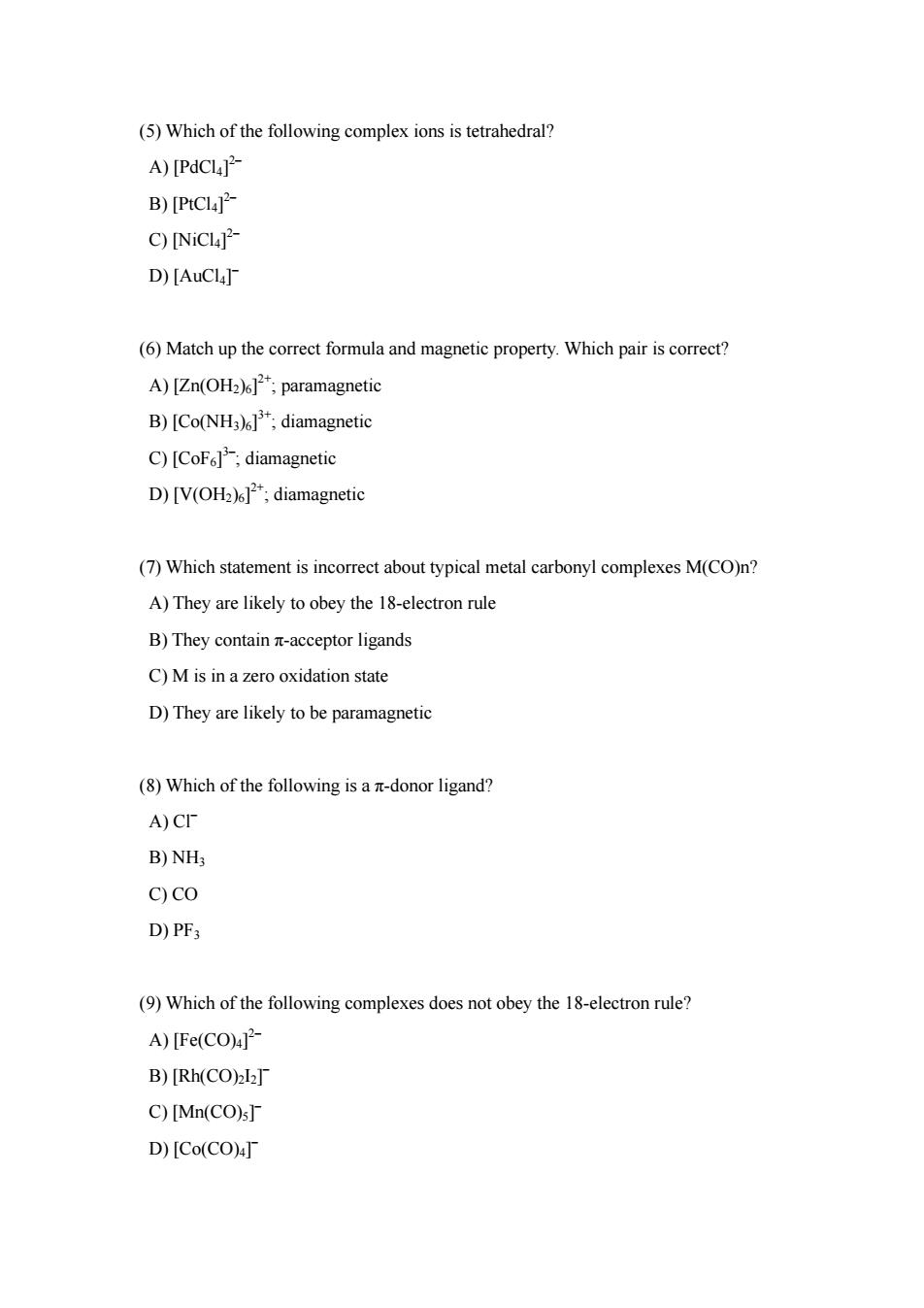正在加载图片...

(5)Which of the following complex ions is tetrahedral? A)[PdCL- B)[PtCl4 C)[NiCl- D)[AuCI] (6)Match up the correct formula and magnetic property.Which pair is correct? A)[Zn(OH2);paramagnetic B)[Co(NH3)6];diamagnetic C)[CoF]diamagnetic D)[V(OH2diamagnetic (7)Which statement is incorrect about typical metal carbonyl complexes M(CO)n? A)They are likely to obey the 18-electron rule B)They contain -acceptor ligands C)M is in a zero oxidation state D)They are likely to be paramagnetic (8)Which of the following is a r-donor ligand? A)Cr B)NHs c)co D)PF3 (9)Which of the following complexes does not obey the 18-electron rule? A)[Fe(CO)4 B)[Rh(CO)2I2] C)[Mn(CO)s] D)[Co(CO)4(5) Which of the following complex ions is tetrahedral? A) [PdCl4] 2– B) [PtCl4] 2– C) [NiCl4] 2– D) [AuCl4] – (6) Match up the correct formula and magnetic property. Which pair is correct? A) [Zn(OH2)6] 2+; paramagnetic B) [Co(NH3)6] 3+; diamagnetic C) [CoF6] 3–; diamagnetic D) [V(OH2)6] 2+; diamagnetic (7) Which statement is incorrect about typical metal carbonyl complexes M(CO)n? A) They are likely to obey the 18-electron rule B) They contain π-acceptor ligands C) M is in a zero oxidation state D) They are likely to be paramagnetic (8) Which of the following is a π-donor ligand? A) Cl– B) NH3 C) CO D) PF3 (9) Which of the following complexes does not obey the 18-electron rule? A) [Fe(CO)4] 2– B) [Rh(CO)2I2] – C) [Mn(CO)5] – D) [Co(CO)4] – 3